In the power battery system, the battery generates excess heat, and the heat is transferred through the contact of the battery or the module with the surface of the plate-type aluminum device, and is eventually carried away by the coolant passing through the internal flow path of the device. This plate type aluminum device is a liquid cooling plate.
As the demand for passenger car IP67 became necessary, the range of cooling modes available for power battery systems was severely narrowed. Among the more mature cooling methods, air-cooling has been basically excluded from the use of battery packs for passenger cars, in addition to using other heat transfer methods. Coupled with the demonstration effect of Tesla, water cooling is no longer a pre-research topic and has become the focus of commercialization as soon as possible.
This article mainly relates to a point in the liquid cooling system of a power battery, a liquid cooling plate. The first half of liquid cooling board basic knowledge, the latter half of the current typical models of liquid cooling board application.
Liquid cooling plate does not seem to have a unified definition. We only give it a definition of the liquid cooling plate for power battery packs. Let's define it for the time being. In the power battery system, the battery generates excess heat and the heat passes through the battery. Or the module is in contact with the surface of the plate-type aluminum device and is eventually taken away by the coolant passing through the internal flow path of the device. This plate type aluminum device is a liquid cooling plate.
General requirements for liquid cooled panels
With high heat dissipation, the excess heat generated during the operation of the power battery can be promptly exported to avoid excessive temperature rise.
High reliability, working in the road vehicle environment, vibration, shock, high and low temperature alternating environment, are harsh working conditions for most products, and the power battery voltage is often a few hundred volts, coolant leakage is a serious problem, even if you use Insulation with good cooling liquid, but after encountering external impurities, the insulation performance will be reduced immediately, therefore, the reliability of cold plate sealing is very important;
The precise design of heat dissipation prevents excessive temperature difference within the system. This is due to the requirements of the performance of the lithium battery itself. The performance and aging of the battery are closely related to the operating temperature.
There are strict requirements on the weight of the cold plate, which comes from the pursuit of the energy density of the power battery system. The cooling system that seriously lowers the system energy density is unacceptable to both customers and designers.
Several liquid cold plate product examples
Some factory A liquid cold plate product example
The liquid-cooled system utilizes the characteristics of liquid flow heat transfer coefficient, relying on liquid flow to transfer high heat, and is one of the most effective heat-dissipation methods at present, and can dissipate hundreds of watts to thousands of watts of heat. The manufacturer's standard pipeline liquid cooling plate directly contacts the floor of the equipment to be cooled by placing a coolant tube, which can reduce the number of heat exchange interfaces between the equipment and the coolant, thereby maintaining the lowest thermal resistance and improving performance.
According to the type of liquid-cooled plate, the manufacturer divides the types of liquid-cooled plates, including: Aluminum Vacuum Brazing Coldplate, FSW Coldplate, and buried water-cooled plate. Exposed Tube Coldplate and Aluminum / Copper Plate Long Hole Drilled. Their respective advantages and disadvantages can refer to the following table.
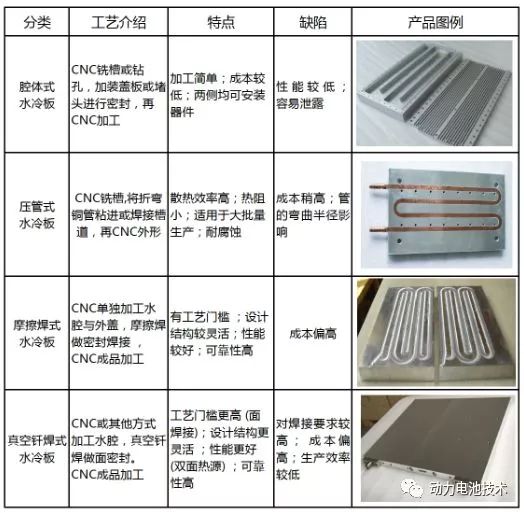
Typical parameters:
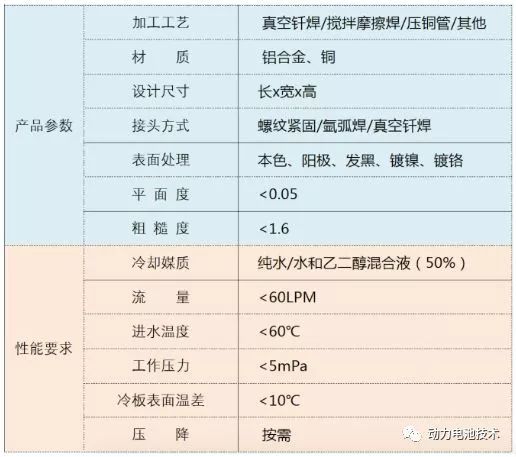
A manufacturer of liquid cold plate product examples
This is based on the most prominent features of the product to divide the type of cold plate, including a total of three types.
Type 1, emphasizes heat dissipation performance. The fin structure is used in the fluid path to increase the contact area with the coolant, thereby improving the thermal conductivity. The product has a vacuum brazed construction that provides a custom configuration.
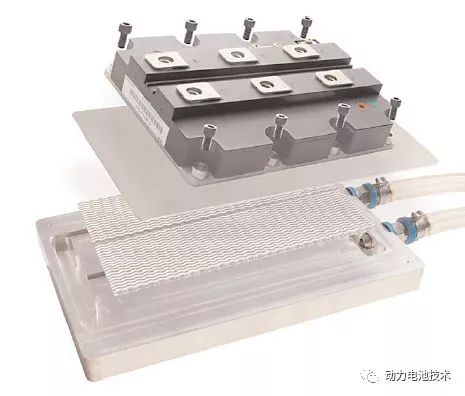
Type 2 emphasizes low pressure drop. The liquid cooling plate uses a specially-made CNC milling microchannel to form a fluid channel on the bottom plate. Under the condition of low pressure drop, it has excellent heat dissipation performance, thus reducing the cost of the fluid circulation system.
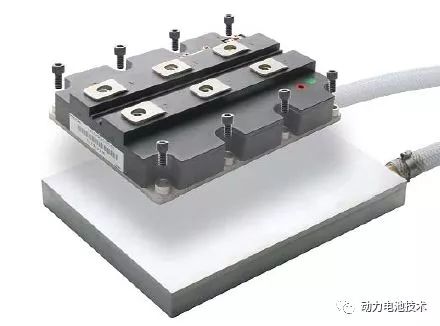
Type 3, emphasizing the structural form of pipeline embedding. The pipe is embedded in the bottom plate to form a cold plate with good mechanical properties. The surface extension liquid cold plate adopts a thicker and more densely arranged pipe to increase the area, thereby expanding the surface area in contact with the cooling liquid, thereby improving the heat conduction performance.
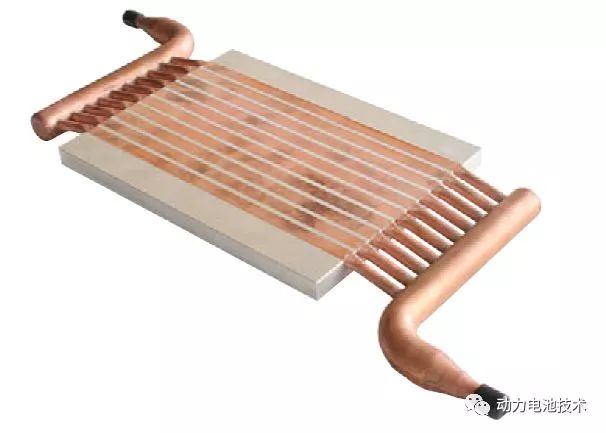
A factory cold plate product example
This kind of product, the overall weight is lighter, but it can not bear weight.
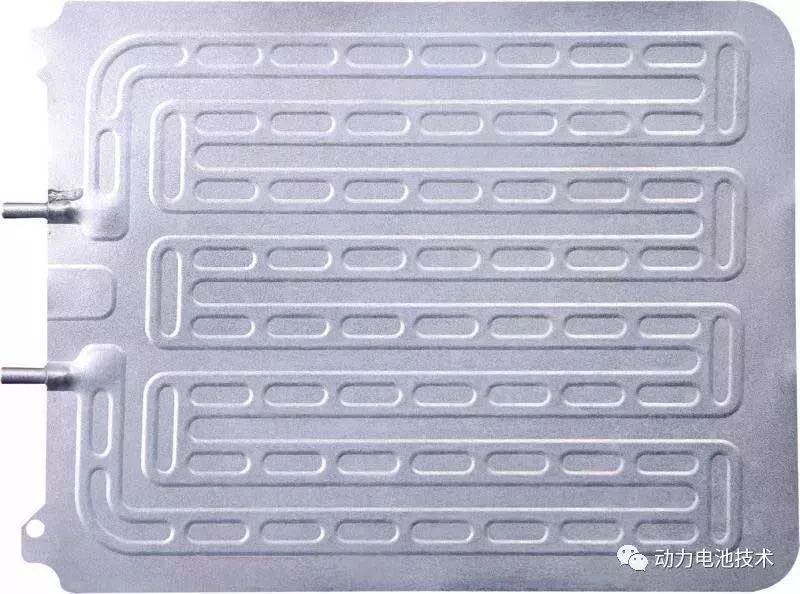
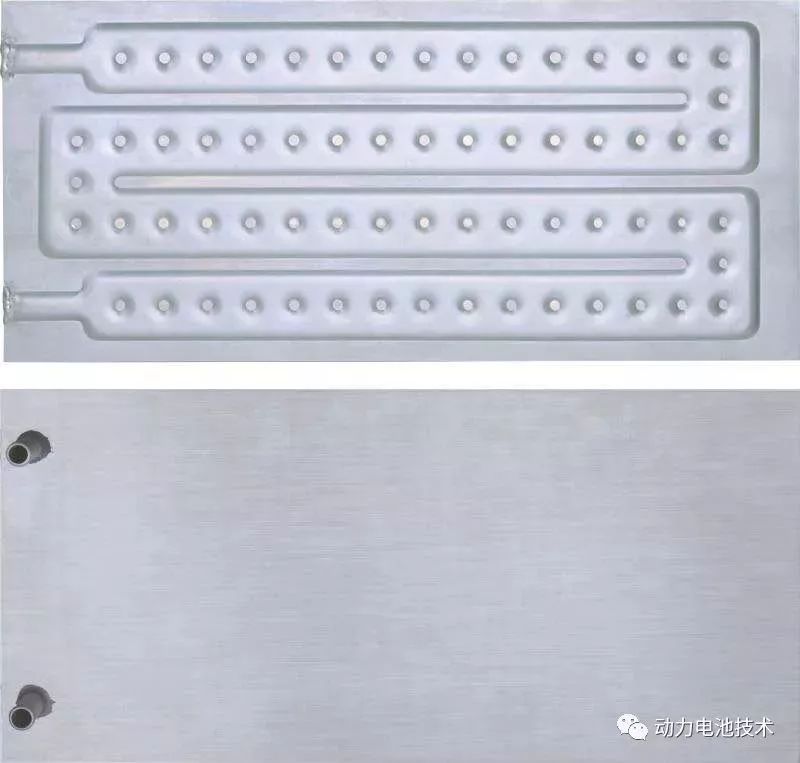
Liquid cooling plate typical process
Liquid cooling plate production process is more complex than general air-cooled radiators. Liquid cooling has higher requirements on process reliability. Therefore, manufacturers with strong technical precipitation can provide reliable technical support. General liquid cooling plate production technology processes are as follows.
Buried process
The buried pipe process is the most commonly used liquid cooling radiator liquid cooling plate manufacturing process. Generally, it is an aluminum substrate buried copper pipe, that is, the aluminum substrate is processed by the CNC machining slot, and then the stamped machine is used to bend the shape of the copper pipe. It is pressed onto an aluminum substrate and brazed and then processed into a water-cooled plate.
Buried tube type liquid cooling plate generally has three forms: one is a shallow tube liquid cooling plate; the second is a deep tube liquid cooling plate; third is a welded pipe process; and fourth, a double-sided pipe clamping process liquid cooling plate. The three forms of the process are not much different, and the difficulty of processing is the same. Some were originally designed for the liquid cooling principle of high-power switching devices. In power battery cooling systems, they can also be used for reference.
Shallow buried pipe process: It is suitable for single-side installation. After the copper pipe is flattened, it is simultaneously milled with the aluminum plate, which is fully conducive to the heat conductivity of the copper pipe to take away the heat. The light weight of aluminum plays a role in weight reduction and cost control.
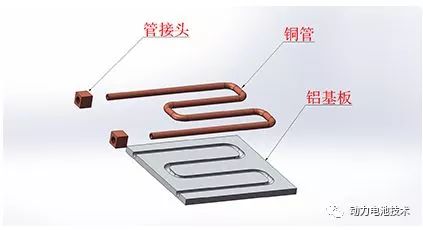
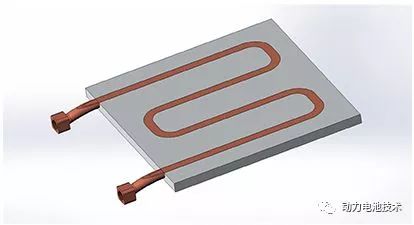
Deep-buried tube technology: The packing is made of high thermal conductivity epoxy resin imported from the United States. Under the condition that the temperature difference of the cooled device is not high enough, it can be installed on both sides. The thickness of the copper tube is not reprocessed, and there is filler protection for application. Safety, especially suitable for use as cold plate medium for medium.
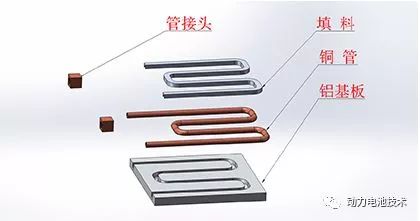
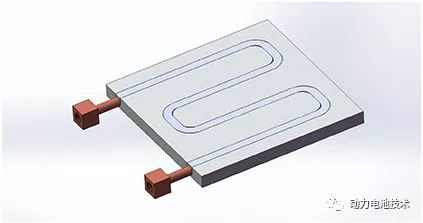
Welded pipe technology: suitable for copper + copper pipe, so as to reduce the thickness of the plate to reduce weight.

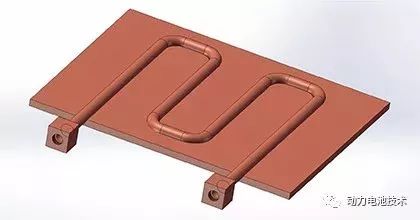
Double-side clamping process: two-sided installation of the device, the process is simple and low cost; aluminum plate + aluminum tube & brass tube & stainless steel tube.
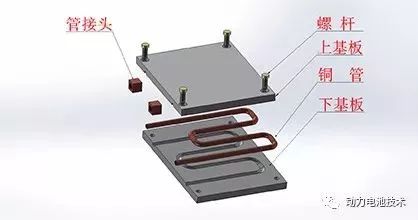
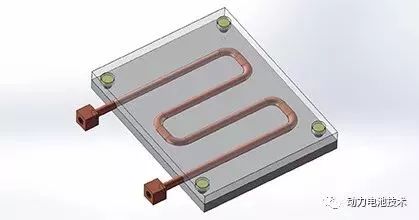
Profile + welding
The liquid-cooled radiators processed on the basis of profiles have more types of radiators, more types, plate type, channel type, and modular type. For processing and welding, the profile and joint piping are combined into an integral liquid-cooled radiator.
Using the extrusion process, the cold plate runner can be directly formed, and then the cycle can be opened through the machine method. Usually, the welding process is carried out using welding processes such as friction welding and brazing welding. This process has high production efficiency and low cost; it is not suitable for excessive heat dissipation density. The application is not suitable for applications where there are too many screw holes on the surface to limit the course of the watercourse or reduce reliability. Mainly used: power battery water cooling heat sink, water box and standard power module integrated cooling products.
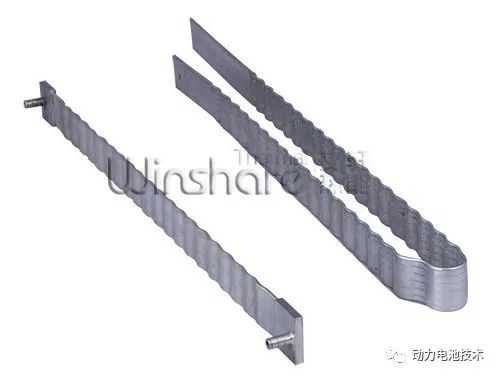
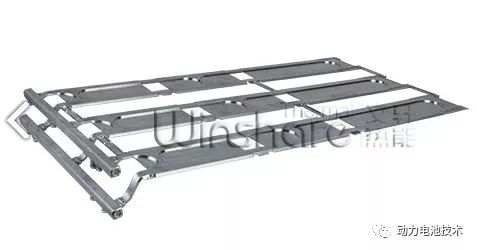
Machining + welding
The water-cooled plate is machined, and the internal flow path size and path can be freely designed. It is suitable for thermal management products with large power density, irregular heat source layout, and limited space. It is mainly used in wind power converters and photovoltaic inverters. The design of heat dissipation products in such areas as IGBTs, IGBTs, motor controllers, lasers, energy storage power supplies, and ultra-computing servers, and less in power battery systems.
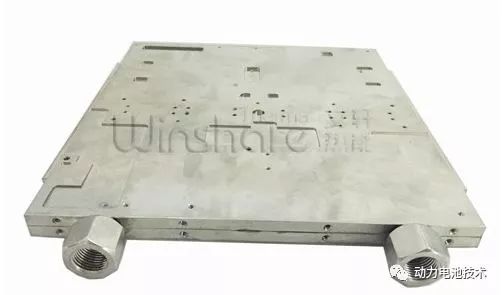
The microchannel heat sink is also a heat sink manufactured by combining machining and welding processes. It is more complicated to manufacture than other heat sinks, and microchannel heat sinks are generally used in machines with large heat dissipation and relatively concentrated heat dissipation. The way of the channel is because the waterway is wider and more uniform, which can quickly take away the concentrated heat.
However, the manufacturing process of micro-channel liquid-cooled heat sinks is also more complex. Generally, micro-channels are machined and then welded using a friction welding process. The production cost is also high.
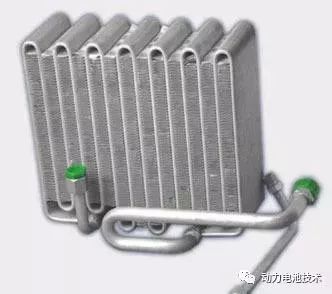
Die Casting + Welding
Die-casting process is a very mature and widely used molding method. With the rapid development of new energy vehicles, it becomes the first choice for mass production of motor controllers, power battery pack trays, and heat-dissipation boxes. However, it is necessary to control die-casting impurities in the process. The problem of porosity, etc., the conservative use of seals or the use of friction welding methods, all need to improve the reliability of the process to avoid leakage problems.
Die-casting and then welding, process control is good, and the process is stable, with batch delivery capabilities. In addition to the friction welding process, some water-cooled panels will also be brazed or vacuum brazed.
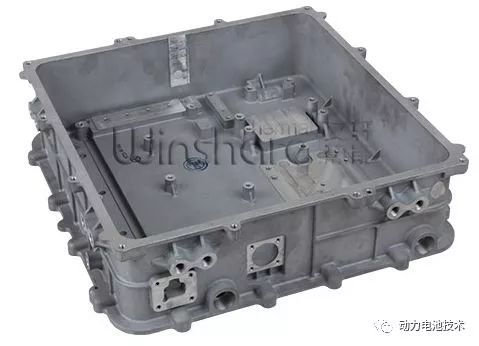
This kind of water-cooled board can be considered together with the battery pack die-casting box. The Audi Q7 PHEV lower-layer water-cooled board is used for this purpose. In the two days before the Beijing auto show, a molded sample display has been seen.
Typical model water cooling board
In the power battery system, there are many ways to take heat away from the surface of the cell, only in different ranges, and can be divided into cell-level water-cooled plates integrated in the module and module-level water-cooled modules outside the module. board. Here are a few pictures from the public number of “Power Battery Thermal Management Technology†to illustrate the application of water-cooled panels in practical cases.
Module level water cooling board
The water-cooled plate as a whole acts on one or more battery modules at the same time. The water-cooled plate is used as a component of the entire battery pack instead of the components of the battery module, and we put it under the title of the module-level water-cooled plate.
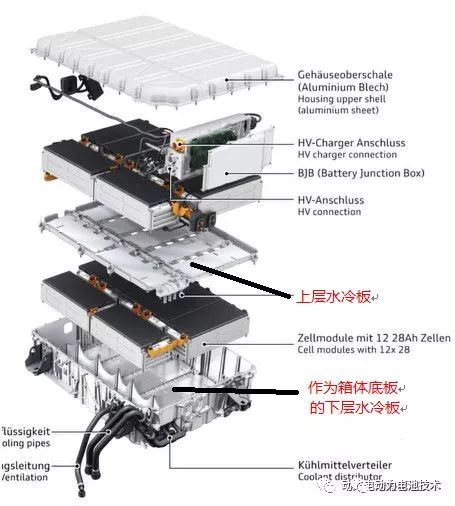
Audi Q7 PHEV Battery Pack
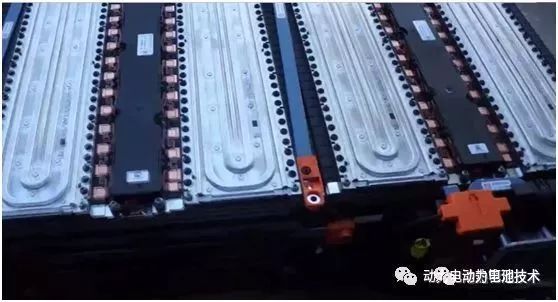
Mercedes-Benz Smart Gen3 battery pack
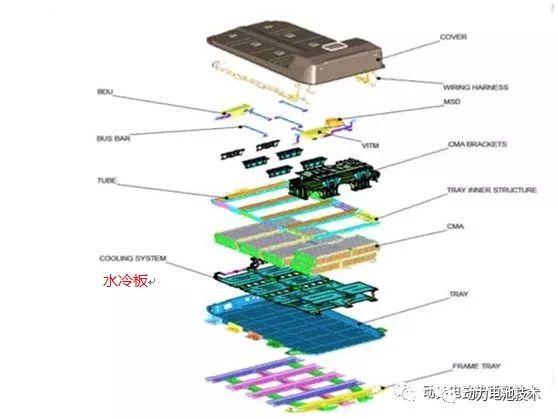
Chevrolet Bolt 2017 Battery Pack
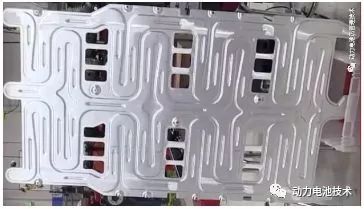
Chevrolet Bolt 2017 Liquid Cold Plate in kind
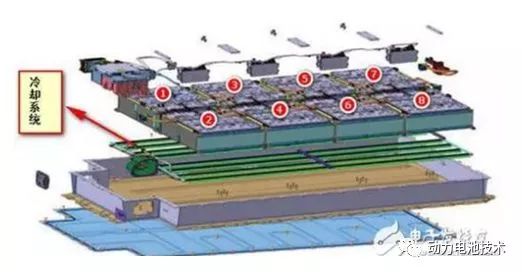
BMW i3 liquid cooling system
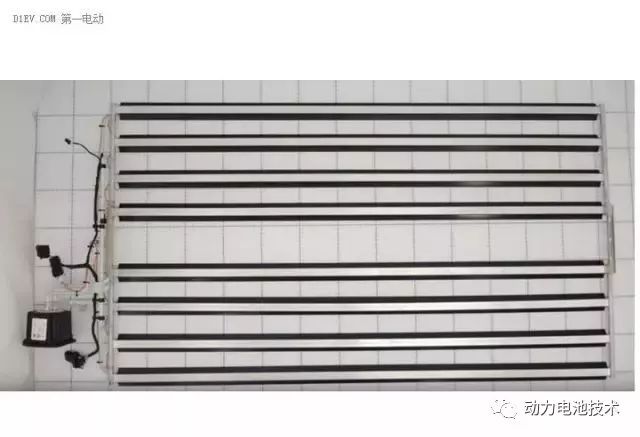
BMW i3 liquid cooling plate in kind
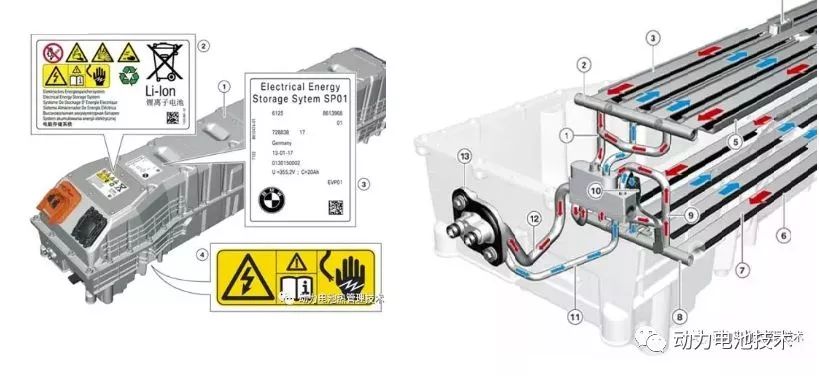
BMW i8 battery pack and cold plate
Battery level water cooling board
A water-cooled plate or a sheet material with good thermal conductivity is sandwiched between the cells and becomes part of the module to achieve better heat dissipation. We place this type under the heading of the water-cooled plate inside the module.
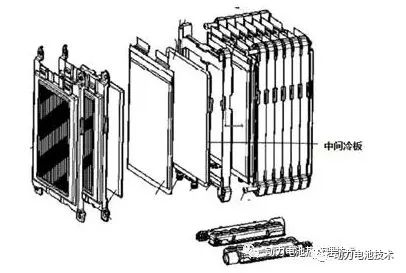
Explosion of Volvo XC90 T8 battery pack module
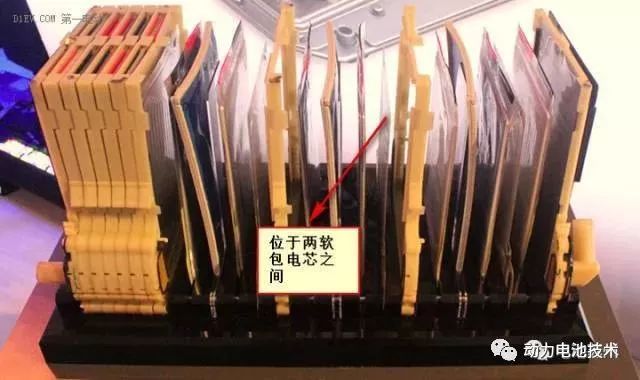
GM Volt module structure
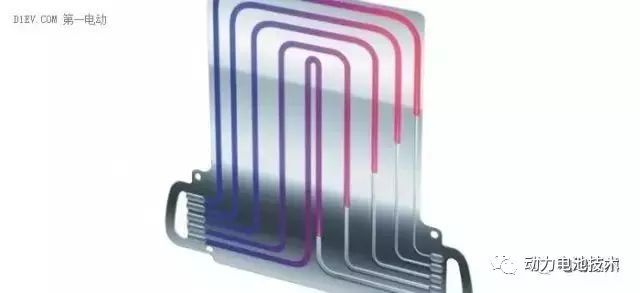
GM Volt cooling structure
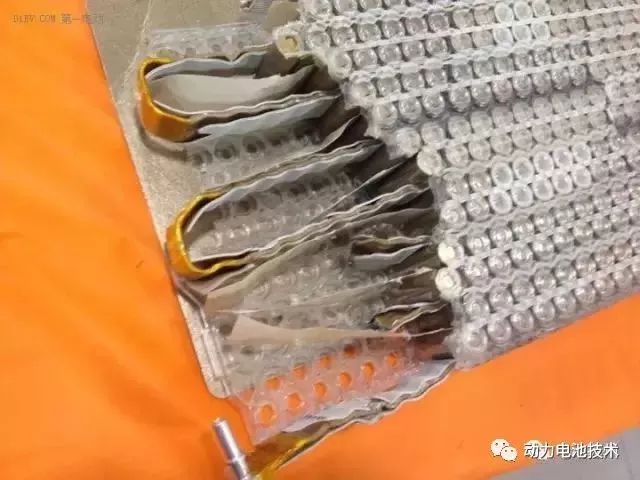
Tesla Model S Module
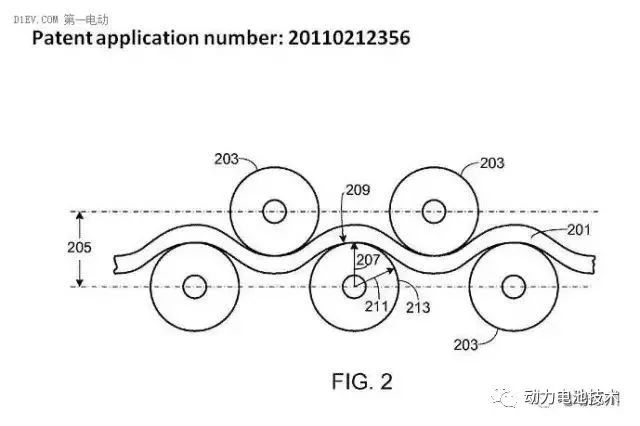
Tesla cylindrical battery water cooling plate patent description
Observe the application case we can see: the square battery liquid cooling system, most of the application of module-level water-cooled board, and generally placed in the bottom of the battery box; soft liquid cooling of the battery pack, the module is the integration of small water-cooled board in most forms, There are also aluminum modules integrated in the module, and module-type liquid-cooled plates are set on the outside of the module. Cylindrical batteries, the serpentine tube headed by Tesla, are the main forms of liquid-cooled heat sinks.
The high-definition Hydrogel Screen Protector is made of TPU (polyurethane) material, which has high self-healing performance and anti-scratch performance. It is suitable for cutting with a Screen Protector Cutting Machine, but you need to pay attention to the angle of the blade when cutting to avoid cracking the Screen Protector.
Compared with other Screen Protectors, Hydrogel Screen Protectors have the following advantages:
1. HD Clear: The Hydrogel Screen Protector has an ultra-thin thickness of 0.14mm and high transparency. It will not affect the display effect of the mobile phone screen, and users can enjoy a clearer display effect.
2. Self-healing: The Hydrogel Screen Protector can automatically repair minor scratches or damage when encountering minor scratches, abrasions, etc., so that the screen remains perfect. Therefore, the lifespan of the screen protector can be extended.
3. Full coverage: The Hydrogel Screen Protector uses a high-permeability adhesive with strong adhesion. The flexible hydrogel film tightly fits the entire device screen without warping the surface, providing maximum protection for your screen
4. Sensitive touch and anti-fingerprint: The ultra-thin material provides a sensitive touch, which significantly improves the touch sensitivity when playing games. Built-in oleophobic and anti-fingerprint coating protects your screen from fingerprints and oil stains and is easy to clean.
HD Hydrogel Screen Protector is a powerful Screen Protector with perfect protection and repair effects, and also has the advantages of high transparency and no bubbles, which is an ideal choice for protecting your screen.
HD Screen Protector, High-Definition Screen Protector, HD Hydrogel Film, HD Clear Screen Protector, Hydrogel Film,HD Hydrogel Screen Protector
Shenzhen Jianjiantong Technology Co., Ltd. , https://www.jjthydrogelmachine.com